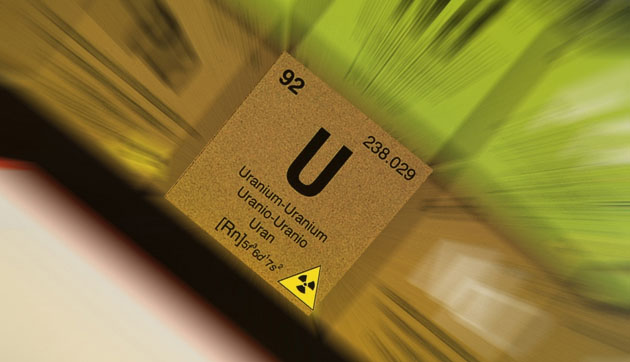This week I thought we'd take a moment to reflect on the eventful year it's been for gold, natural resources and emerging markets by highlighting this year's most popular commentaries and entries from my Frank Talk blog.
Here's a list of what mattered most to readers in 2011.
1) BRIC Self Sufficiency Index—February 10
Sometimes a chart can tell the whole story. This interesting chart from Bank of America-Merrill Lynch showing the supply/demand fundamentals of several key industrial metals and basic materials attracted the most attention on my blog this year.
The dotted line in the chart represents a key tipping point. The resources to the left of the line are those the BRIC countries must obtain outside of their own borders to meet domestic demand. The BRICs produce an excess amount of the two metals to the right of the line and export the remaining amount to other countries.

These materials are the necessary elements needed for emerging nations to take the next steps in their development. You can see that the BRICs must rely on imports in order to meet demand for metallurgical coal, copper concentrate, thermal coal, iron ore, refined copper and uranium—implying higher prices for several years to come.
Click here to read full article
2) Understanding the Rise of China—February 3
Curiosity about China and the insightful words of Martin Jacques, author of When China Rules the World, led this post to the #2 spot.
Jacques says China is going to change the world in two fundamental respects. First, never before in the modern era has the largest economy in the world been that of a developing country. Second, for the first time in the modern era, the dominant country in the world will not be from the West.
Click here to watch Jacques' full speech
3) Which Gold Miners Have Largest Upside—October 13
For much of the year, a prominent story in the gold sector was the performance gap between gold miners and climbing prices of the yellow metal (see #6), leading us to ask our readers which miners had the largest upside? My investment case for exploration and development miners, or juniors, was the subset's near-record low price-to-NAV level.
Click here to read full article
4) Is Gold About to Have Its Status Upgraded?—June 17
With the global banking system set to approve the Basel III banking provisions, I explored the possible ramifications if the Basel Committee on Banking Supervision (BCBS) decided to upgrade gold to a Tier 1 asset.
Click here to read full article
5) Don't Fear a Pullback in Prices—April 25
The last week of April we received our first glimpse of the volatility that would grip markets and investors throughout 2011. After S&P warned of a downgrade to U.S. debt, gold and oil rocketed higher. I cautioned you to be aware of the inevitable snapback that comes with these types of moves but said investors could use these pullbacks as an opportunity to "back up the truck."
Sure enough, gold prices pulled back before beginning their climb toward $1,900 an ounce. However, it proved to be the high for oil prices, which fell below $80 a barrel in early October and currently sit just below $100 per barrel.
Click here to read full article
6) Will Gold Equity Investors Strike Gold?—June 20
As I referenced before, the story of the year for gold investors has been the underperformance of gold mining stocks compared with bullion. However, this wasn't the case for all of 2011. The NYSE Arca Gold BUGS Index (HUI) had outperformed gold bullion through April, but the relative performance quickly reversed and the HUI trailed bullion by nearly 30 percent by mid-August.

This isn't the first time gold bullion and gold equity prices have diverged. Gold equities underperformed gold bullion in 2000 and 2008 during times of extreme market negativity and uncertainty. These previous instances have been merely temporary setbacks and markets generally reverted back to their long-term trends.
Click here to read full article
7) How to Find Opportunities from Blood, Debt & Fears—September 6
This piece from September is one of my favorites of the year because it pops the notion the gold is in a bubble. Despite gold's dramatic bull run over the last 10 years, the yellow metal is only twice as high as its 1980 price. In comparison to other economic yardsticks since 1980, this is miniscule. Ian McAvity, editor of Deliberations on World Markets, says that federal debt, the S&P 500 Index and even GDP has grown much faster than gold over that same timeframe.

The gross U.S. federal debt of $14.3 trillion is 17 times its 1980 level. In 1980, the S&P 500 was at 105; today, it trades around 1,100. A gold price of $1,808 seems paltry as it is only 2.5 times the 1980 high of $738.
McAvity extrapolates the relative growth rate of the yellow metal, indicating that if gold doubled from its current high, it "would nearly ‘catch up' to GDP, while it might take a quadruple to match the S&P, or even a six-fold gain from here to catch the growth of debt." Multiplying the largest of these figures by the current price of gold means prices could theoretically go to $10,800. By these standards, gold is hardly a bubble.
Click here to read full article
8) The 2011 Gold Season is Just Around the Corner—August 1
The gold season kicked off a month earlier this year as shenanigans on Capitol Hill and cultural buying pushed gold prices up a staggering 12 percent during the month of August.
September has traditionally been the beginning of the gift-giving season for gold. This is the time of year when gold jewelers are the busiest. The season for gold began with the Muslim holy month of Ramadan in August. Then came Diwali, known as "the festival of lights" in India, and we're in the midst of Christmas here in the U.S. Next will come Chinese New Year.
Click here to read full article
9) Debunking Gaddafi's Gold—March 23
When word got out the deposed dictator had a large pot of gold, many wondered whether that gold would be used to finance Gaddafi's troops in a civil war. Our director of research John Derrick spoke with then CNBC host Erin Burnett about the unlikelihood of that happening.
Click to watch the interview
10) The Bedrock of the Gold Bull Rally—April 4
Naysayers started calling gold a bubble back when prices hit $250 an ounce and though gold's bull market has tossed and flung the bubble callers around for almost a decade now, their voices have only gotten increasingly louder as prices broke through $1,000, $1,200, $1,500 and even hit $1,900 an ounce.
In this extensive piece, we dove into gold's relatively small role in global asset allocation. In 1968, gold represented nearly 5 percent of financial assets. In 1980, the level had fallen below 3 percent. That figure had shrunk to less than 1 percent by 1990 and has remained there since. Eric Sprott wrote that "it is surprising to note how trivial gold ownership is when compared to the size of global financial assets."
Click here to read full article
Frank Holmes, U.S. Global Investors



























































